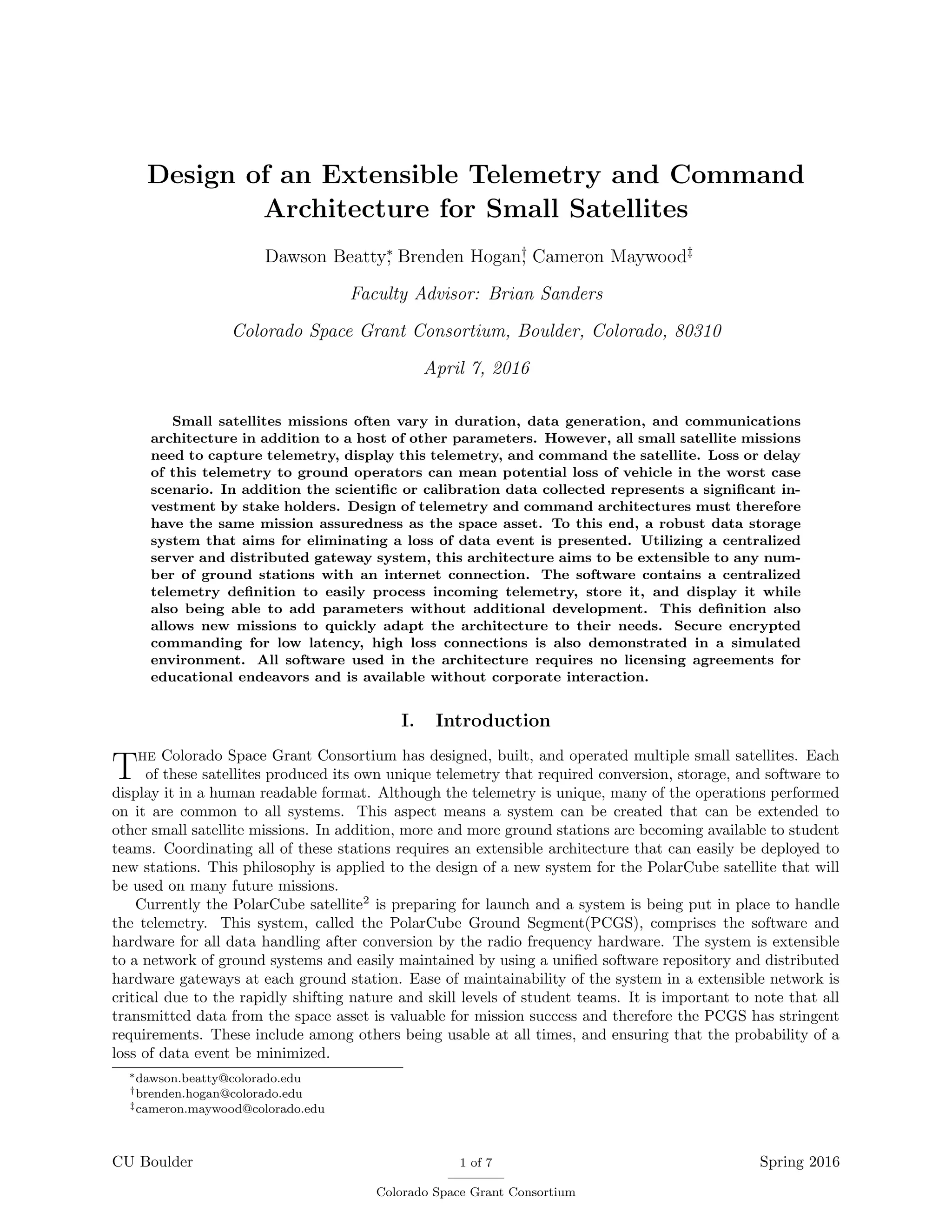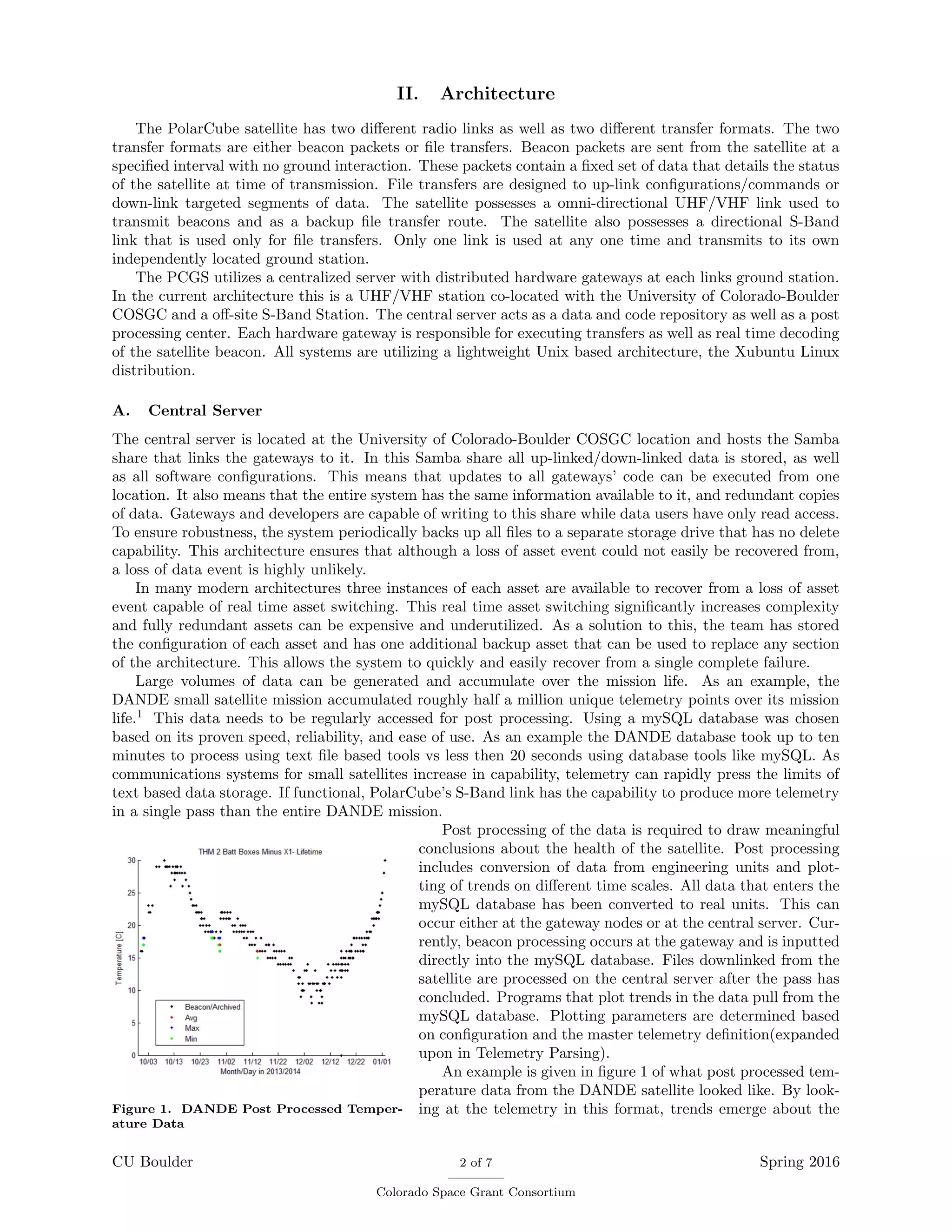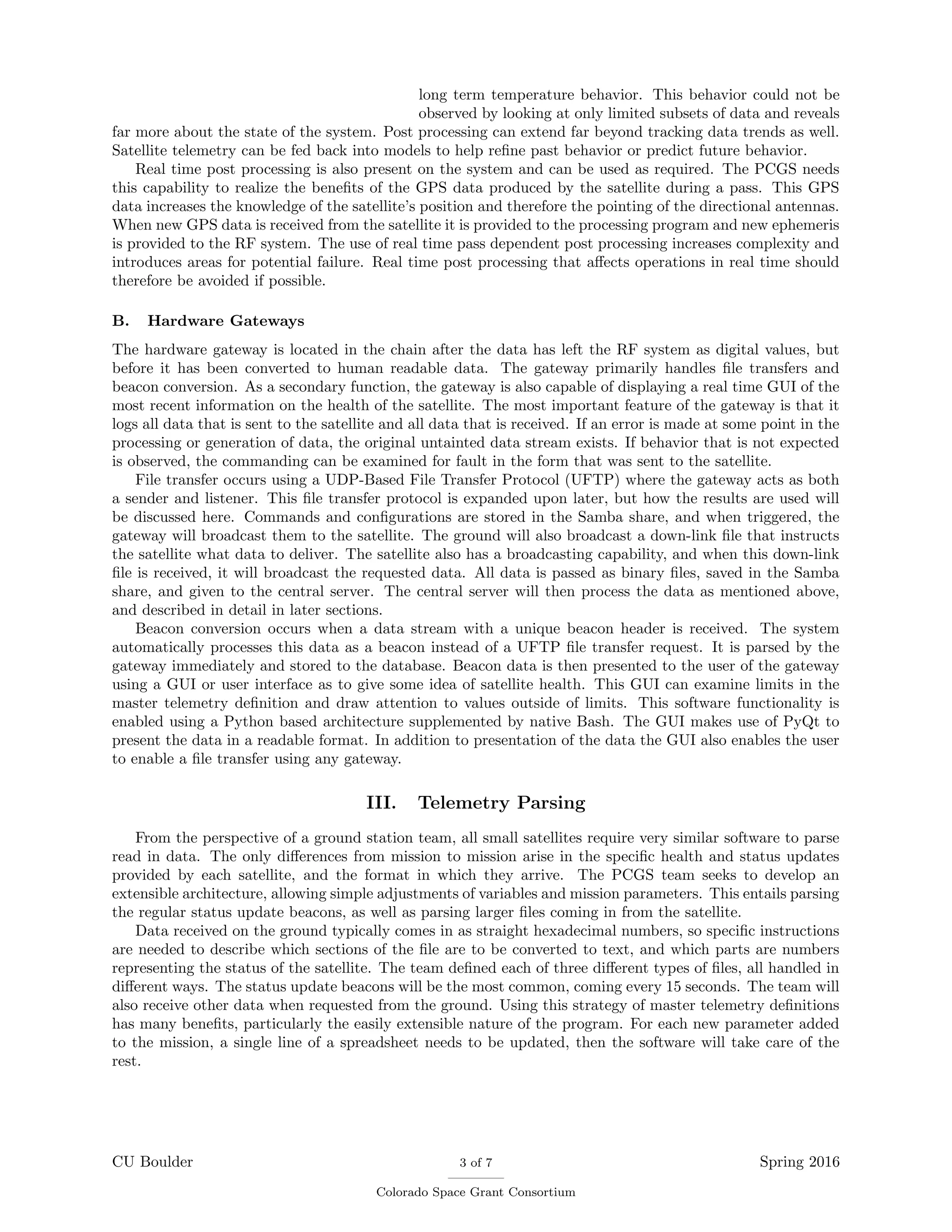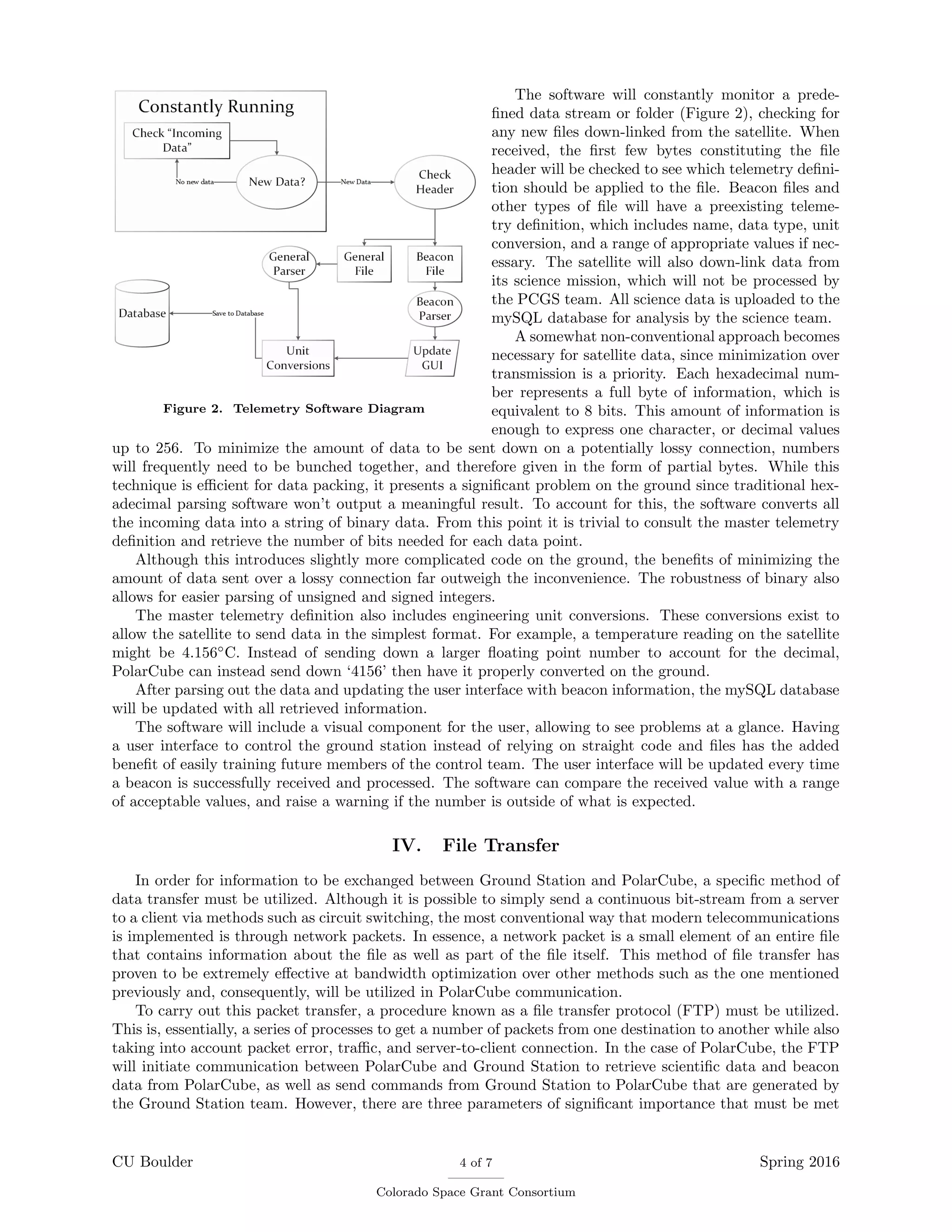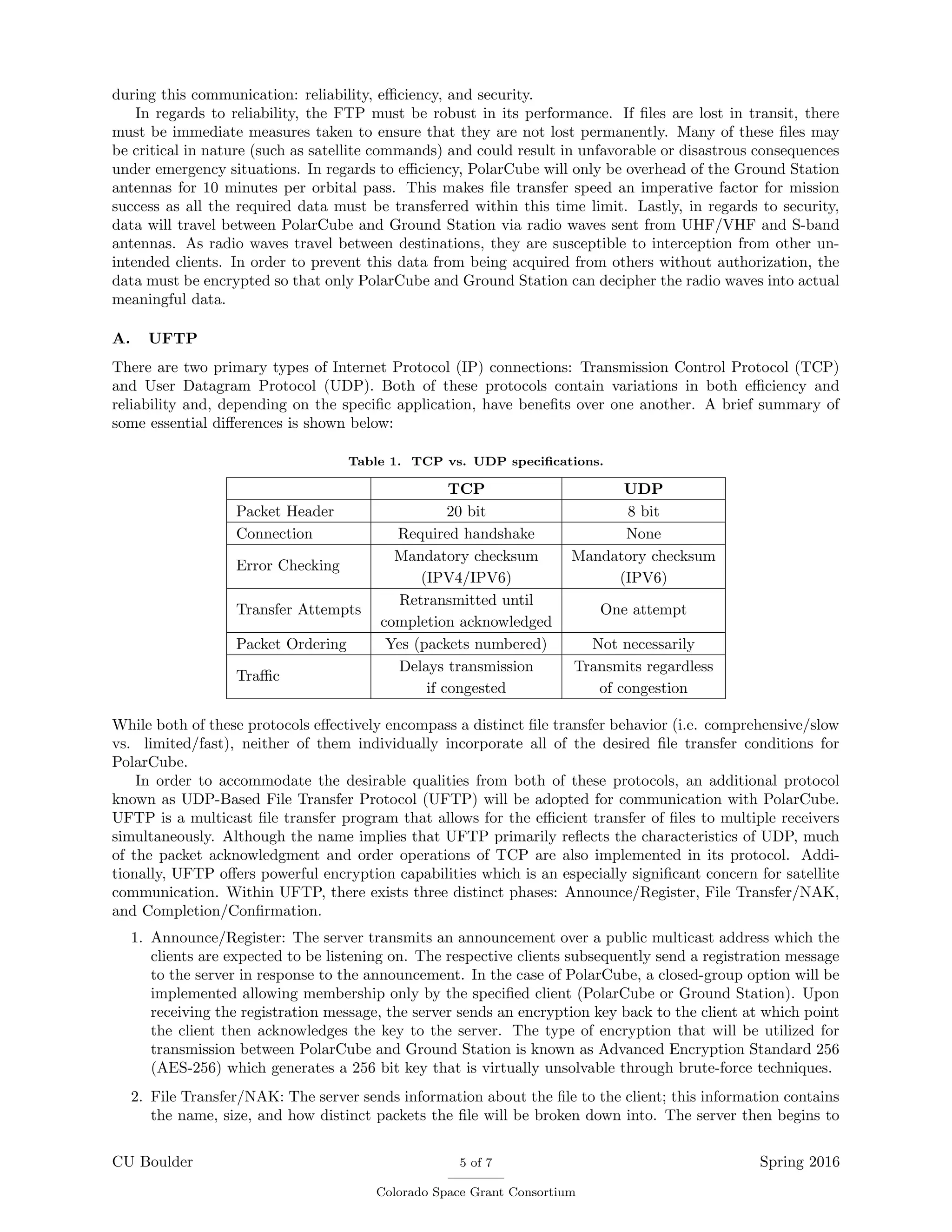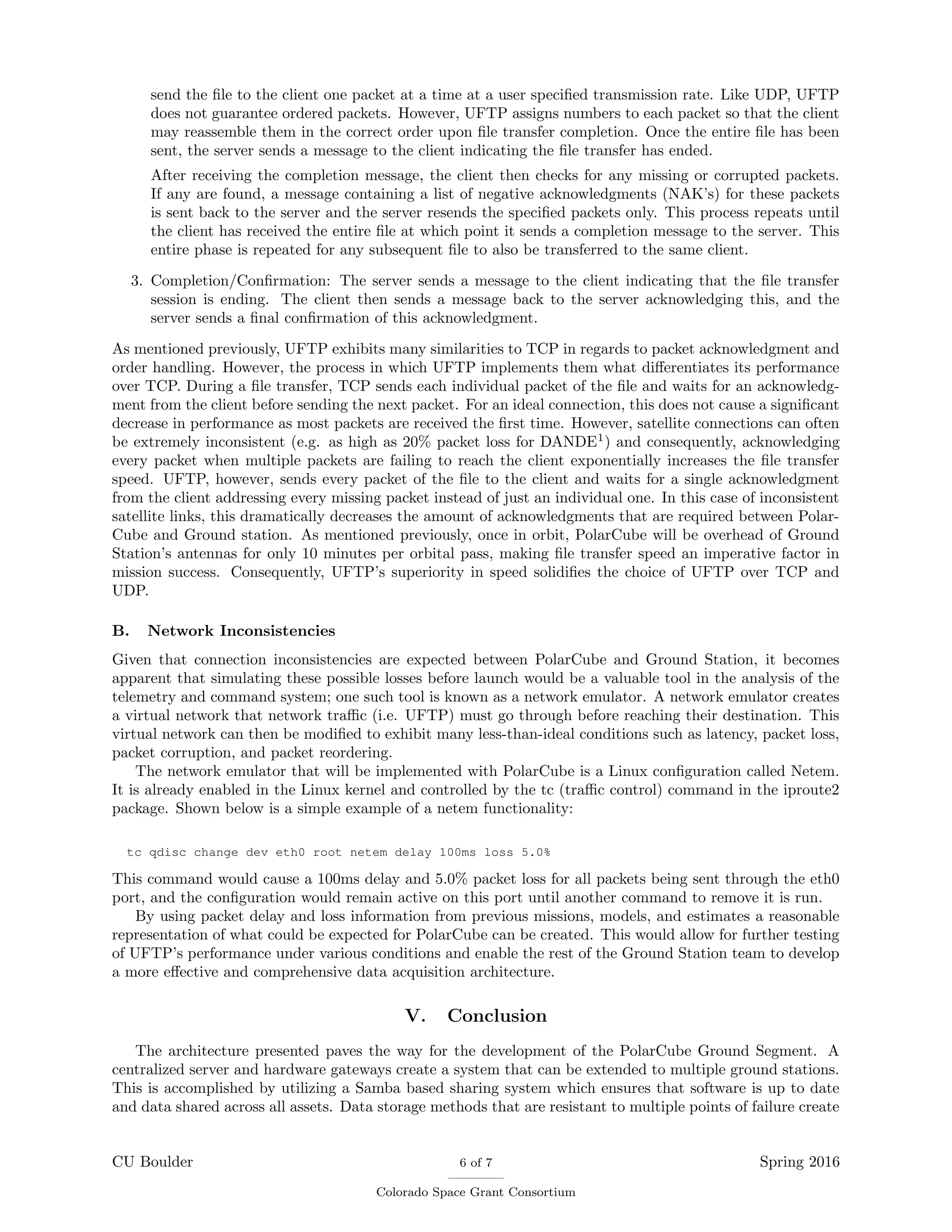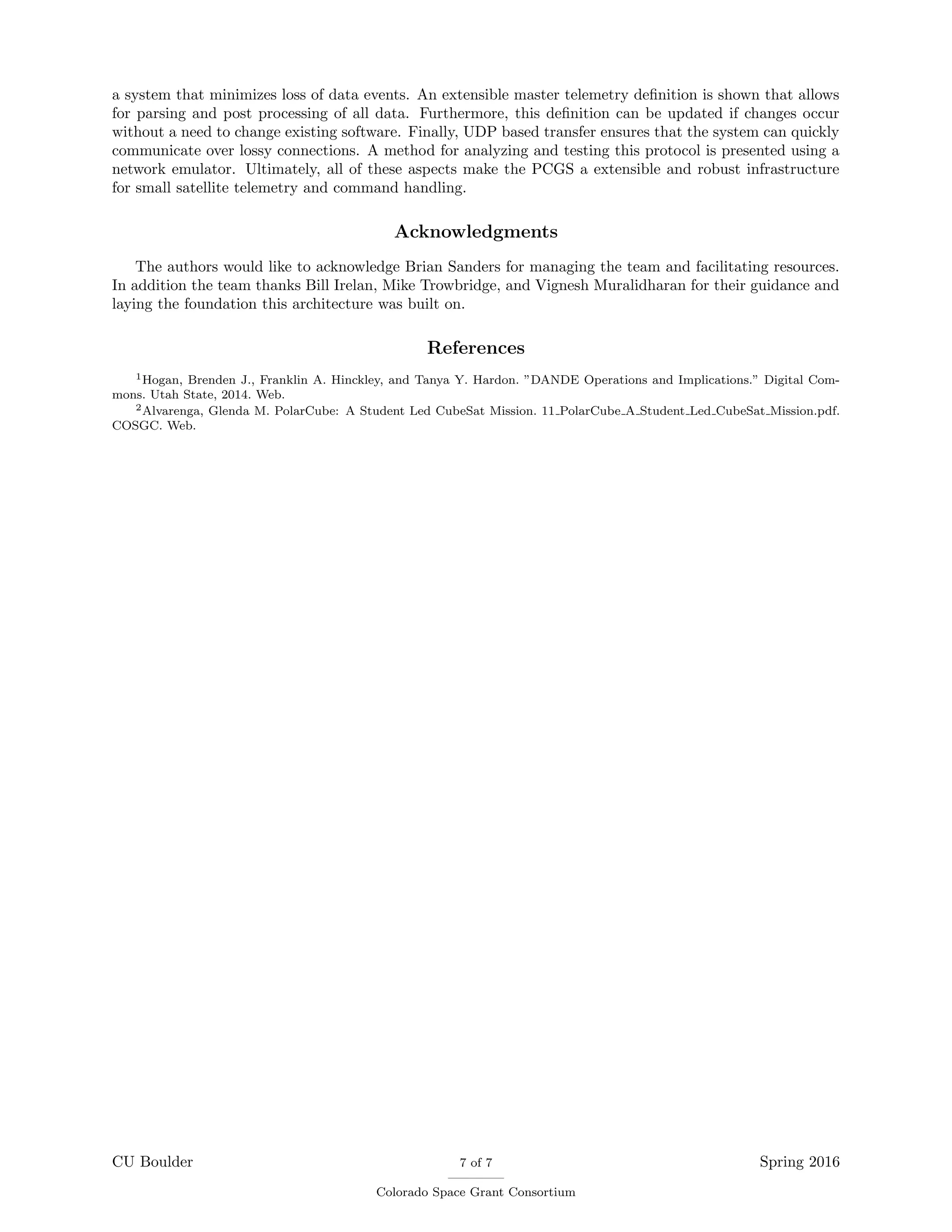This document describes the design of an extensible telemetry and command architecture for small satellites. Key aspects include:
1) A centralized server stores telemetry data, software configurations, and acts as a backup. Distributed hardware gateways at each ground station receive data, convert beacons, and store all data on the centralized server.
2) Telemetry is parsed according to a master definition that allows new parameters to be added easily. Beacons and files are converted to engineering units and stored in a mySQL database for post-processing.
3) A file transfer protocol is used to exchange data and commands between the satellite and ground stations during short orbital passes, with an emphasis on reliability, efficiency, and security
